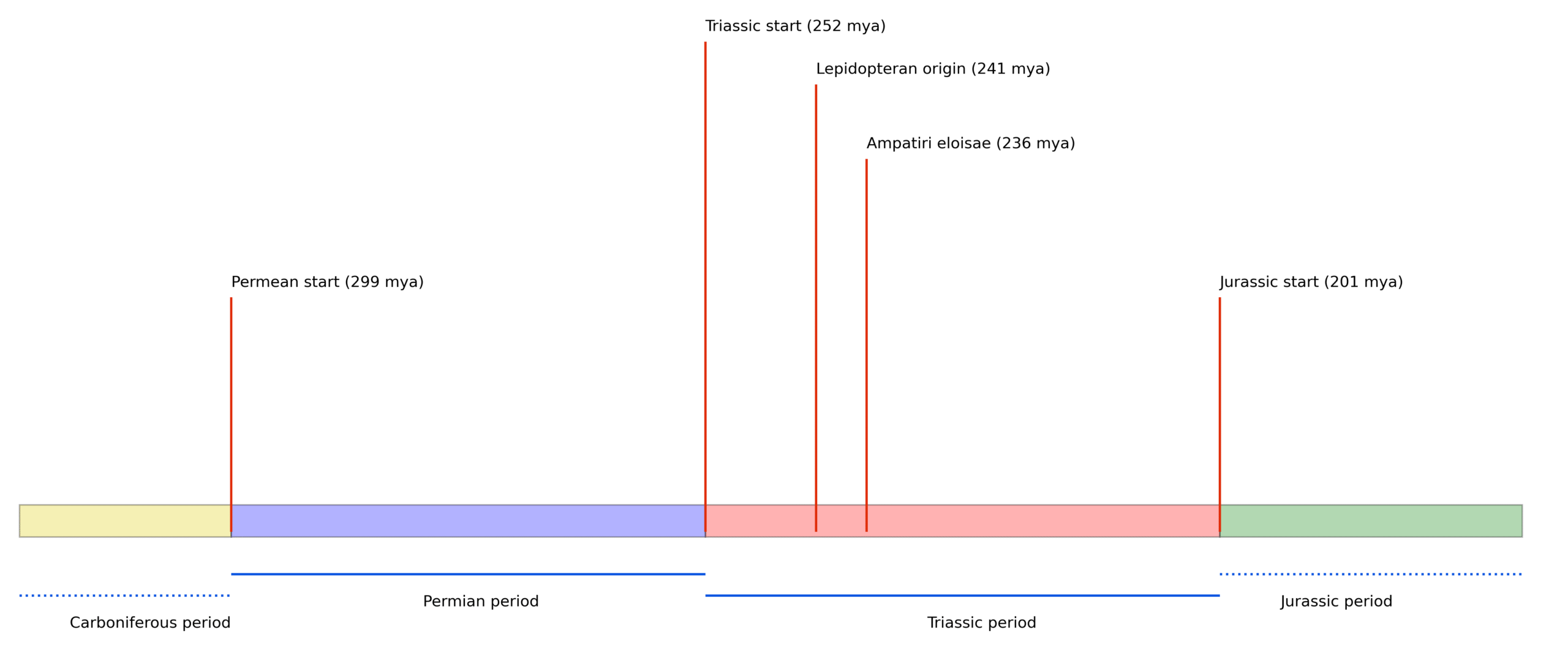An Argentinian research group at CRILAR (Regional Center for Scientific Research and Technology Transfer of La RioJa) have found remains of the wings of an ancient species of butterfly that lived about 236 million years ago. The remains were found in the fossilized poop, called as coprolites, of an herbivorous animal called dicynodont.
Grazing animals such as cows and buffaloes can accidentally eat insects and other things along with the grass they eat. Undigested parts of this ingested stuff is released out with the dung. Apparently, the animal of our interest in this case, the dicynodont, had common places where multiple individuals would go and poop. In northwestern Argentina, researchers had found fossilized poop from such places.
As the researchers, Lucas E. Fiorelli and others, were looking for small fossils from organisms fossilized along with poop, they found small parts of wings belonging to a group called as lepidopterans which comprises of butterflies and moths.
With this discovery, we now have the oldest fossil record of butterflies and moths dating back to 236 million years ago. Before this discovery, the latest fossil from this group of insects was 201 million years old.
Even if direct fossil record may not be available for most of the organisms that ever existed, we can derive the origins of different groups of organisms based on the genetic sequence of currently living organisms. Through such studies, we know that the lepidopterans have originated sometime around 241 million year ago. That means the fossil evidence that we have found is just about 5 million years after the first butterflies evolved on earth.
The researchers have named this species as Ampatiri eloisae. It is named after the young researcher, Eloisa Arganaraz who was one of those who had discovered the fossil site. Eloisa Arganaraz had sadly passed away due to cancer after a few months. The word “Ampatiri” means ‘ancient butterfly’ in Kakan language of the Calchaqui Indigenous people.
It is interesting that this species of butterfly was living when the age of reptiles was just beginning. It is even supposed to have a proboscis which helps butterflies and moths to suck nectar from flowers. Although the modern flowers may not have even evolved at the time when this butterfly was flying around (some reports say otherwise). This probably means that it was feeding on the nectar sacks produced by the then dominant plants, the gymnosperms.
The dicynodont, the animal in whose poop this butterfly was found is also interesting as it was one of the most abundant herbivores that lived in its time. It had even survived the great extinction at the end of Permian period. It is more closely related to mammals like us than any reptiles. During the Triassic period it slowly went extinct as the reptiles began dominating Earth.
